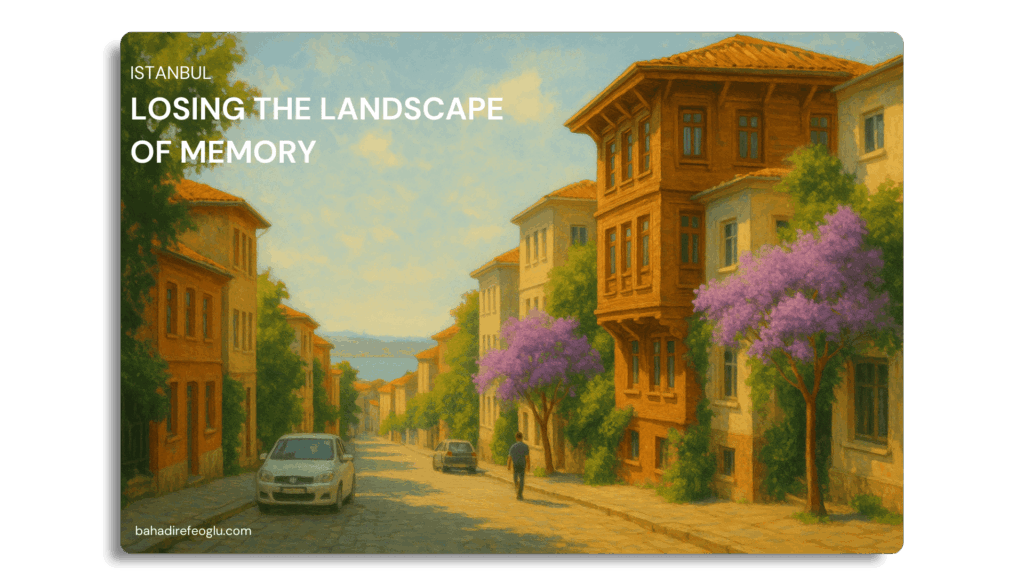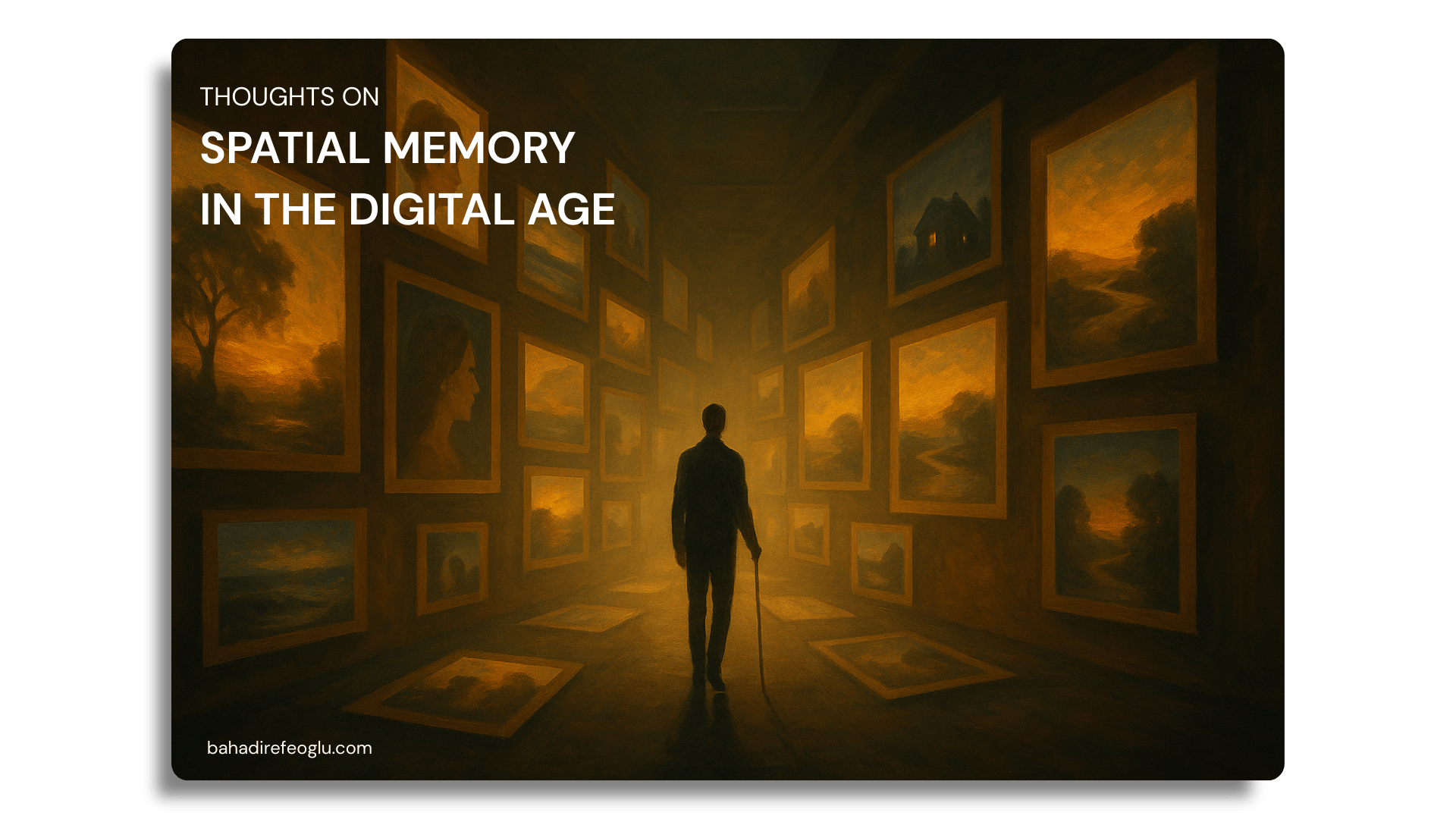What Is Spatial Memory?
Have you ever noticed how certain spaces—whether physical or digital—hold emotional weight?
There’s a concept called spatial memory (mekan hafızası in Turkish), which refers to the way our minds connect memories to specific places.
“Spatial memory is the emotional imprint we leave on places—and the imprint they leave on us.”
We usually think of this in terms of physical locations: the park where you first learned to ride a bike, the café where you met an old friend, or even the street corner that used to have your favorite bookstore. These places anchor our experiences, and when they disappear or change, the memories attached to them can feel abruptly cut off.
Losing the Landscape of Memory

Living between Turkey and Germany has made me acutely aware of how fragile spatial memory can be. In Istanbul, the physical landscape is in constant flux. Shops shut down, street names change, buildings are demolished or transformed.
“In Istanbul, memory fades not because we forget, but because the streets themselves do.”
For those of us who return only occasionally, this rapid change can be jarring. The street you grew up on might look completely unfamiliar after just a year or two. The physical cues that once grounded your memories are simply gone.
In contrast, Berlin preserves the same streets and buildings despite all the historical events it has gone through. I am still able to sit on the same bench that I used to sip my coffee 7 years ago in Berlin.
The Political Side of Spatial Memory
There’s also a political dimension to this erasure. Turkey’s ruling government, in power for over two decades, has reshaped the urban landscape to support its own narrative of a “new” Turkey.
“Spatial memory is not just cultural—it’s political. Changing the space changes the story.”
By altering the cityscape, the past is edited. The buildings and places that carried meaning are replaced with structures aligned with a new identity. This, too, is a form of memory management.
A New Kind of Place: Digital Spaces
But not all spatial memory is tied to geography. Increasingly, we form attachments to digital spaces.
I’ve used Skype since at least 2010. It was how my grandparents first connected with family abroad. For me, it was the bridge to my family and girlfriend while I was studying in the U.S.
We would make plans to “meet on Skype at 9 a.m.” as if it were a shared café or familiar bench.
“Skype wasn’t just software—it was a room we returned to, again and again.”
Over time, other tools became dominant. I used Zoom and Google Meet for business. These platforms felt different—efficient, functional, but not personal. Skype, by contrast, remained a space for intimate conversations.
Skype and the Safe Space of Therapy
In the past few years, especially since the pandemic, Skype became the platform for my therapy sessions. It felt almost like an unspoken pact among therapists: we meet on Skype.
“It’s almost as if therapists made a silent agreement: this is the platform where people feel safe.”
This wasn’t because Skype is the most advanced tool—it isn’t. But it offered something else: familiarity, privacy, and emotional continuity. It didn’t carry the stiff atmosphere of a boardroom or the briskness of a sales pitch. It simply worked—and it felt human.
Maybe it also feels this way because when I log in to my Skype account, there’s literally no one online. This could be why I get the sense of privacy in Skype.
The Loss of Digital Memory

Now, Microsoft has announced that Skype will be phased out, replaced by Microsoft Teams. This change isn’t just technical—it’s emotional.
“Replacing Skype with Teams feels like replacing your grandmother’s living room with a glass-walled office.”
Teams, for me, is the platform of investor calls and corporate culture. It’s functional, yes—but cold. It lacks the gentle digital dust of old memories and I really dislike the UX.
Each week when I opened Skype for therapy, I would see messages from 2017 or 2018 in the sidebar. Those old conversations were like photo albums tucked into the corner of a familiar room.
“Those old Skype chats were like nostalgic photos you see once a year when you visit your grandparents.”
Now, that room is being locked. And we’re being asked to move on.
What Happens When Safe Spaces Disappear?
I haven’t yet asked my therapist what platform we’ll use next. Maybe we’ll switch to Zoom, maybe Teams. But I’m already mourning the quiet ritual of opening Skype.
“Digital platforms may be made of code, but what they carry is memory.”
And I wonder: what does this mean for the thousands of others who used Skype not for business, but for connection—for emotion?
Do You Have a Digital Safe Space?
We often overlook the emotional geography of our digital lives. But just like physical places, these platforms can shape how we feel, think, and remember.
So I leave you with a question:
“Do you have a digital space that feels like warmer?”
A platform where your memories live, where your conversations linger, where your past gently echoes back to you when you least expect it?
